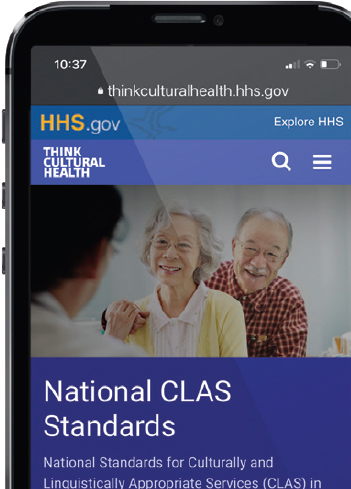Health Disparities and Health Equity:
Righting Historic Wrongs and Building a More Equitable Future

By the 1970s, researchers had uncovered dramatic and persistent differences in health care access and outcomes among communities of color in the United States, a finding that put health disparities on the nation’s political radar. Yet 50 years later, despite important progress, disparities continue to affect the health of racial and ethnic minorities, especially among the poor and uninsured. Health equity must be the foundational principle for all health system reform.

1984
Studying Disparities in Minority Health
Noticing that the health of minority populations was not improving as much as overall health in the United States, the secretary of the U.S. Department of Health and Human Services (HHS) established the Task Force on Black and Minority Health in 1984. One of the task force’s first charges was to develop a report documenting the differences in key health indicators among minority and non-minority groups. The resulting report—known as the Heckler Report, because it was published under the leadership of former HHS Secretary Margaret Heckler—revealed that 60,000 “excess deaths” were occurring in minority populations each year that would not have occurred if minorities had the same death rates as non-minorities.
1986
A National Spotlight on Health Disparities
Another direct consequence of the Heckler Report was the creation of the Office of Minority Health within the U.S. Department of Health and Human Services in 1986, which works to improve the health of Americans in racial and ethnic minority populations through health policies and programs aimed at helping to eliminate health disparities. Subsequent actions by both the National Institutes of Health and Congress led to the creation of the Office of Minority Programs, the Office of Research on Minority Health, and the National Center on Minority Health and Health Disparities, which have advanced research and collaborations to support health equity and enhance the diversity of the scientific workforce.

1990
Creating Protections for Americans with Disabilities
In 1990, the Americans with Disabilities Act (ADA) made it illegal to discriminate against people with various types of disabilities and protected them in many different arenas, including employment, transportation, public accommodations, communications, and access to state and local government programs and services. Under Title II of the ADA, any programs, services, and activities that receive federal financial assistance from the U.S. Department of Health and Human Services must meet accessibility requirements, including sign language interpreters for people who are deaf or hard of hearing and other aids to ensure effective communication in hospitals and clinics.

2001
Guiding Culturally Aware Health Care
In order to better serve the needs of the increasingly diverse U.S. population, the U.S. Department of Health and Human Services created the National Standards for Culturally and Linguistically Appropriate Services in Health and Health Care in 2001. The standards include guidelines that help organizations provide services appropriate to patients’ diverse cultural health beliefs and practices, preferred languages, needs for translation, health literacy, and other communication issues.

2003
Identifying Inconsistent Care Quality and Opportunities for Improvement
The 2003 National Healthcare Quality Report and National Healthcare Disparities Report from the Agency for Healthcare Research and Quality showed that, while the health care system was performing well in many areas, quality care was not universal and opportunities for preventive care were frequently missed. In particular, the National Healthcare Disparities Report found unequal levels of care and access to care across different parts of the U.S. population and underscored the personal and societal price of health disparities.
2003
Digging Deeper into Disparities
In response to concerns that racial and ethnic minorities were receiving lower quality health care than non-minorities, Congress charged the Institute of Medicine with examining the extent and possible causes of these disparities. Its 2003 report Unequal Treatment: Confronting Racial and Ethnic Disparities in Healthcare revealed that racial and ethnic minorities tend to receive lower-quality health care than non-minorities even when accounting for such factors as patients’ health insurance status or income. Bias, stereotyping, and prejudice on the part of health care providers are likely contributing factors in causing these disparities.

2010
New Offices Dedicated to Minority Health
The Patient Protection and Affordable Care Act, often referred to as Obamacare, was passed by Congress in 2010. To increase the focus on the health of minority populations in the United States, it established offices focused on minority health within six agencies of the U.S. Department of Health and Human Services, including the Centers for Disease Control and Prevention, the Centers for Medicare & Medicaid Services, and the U.S. Food and Drug Administration. It also established a new training program through grants to community health care providers in minority communities that encouraged doctors with expertise in primary care, oral health, and behavioral health to practice at these locations.

2015
Recognition of Same-Sex Marriage
On June 26, 2015, the U.S. Supreme Court made the landmark decision that all 50 states must uphold marriage equality, making the United States the 21st country to recognize same-sex marriage. By allowing same-sex spouses to access health-related benefits and insurance coverage, the ruling removed significant barriers to health care for partners in same-sex marriages. The decision came the day after the U.S. Supreme Court ruled that insurers can no longer deny coverage based on a person’s sexual orientation, gender identity, or preexisting health conditions, further advancing efforts to achieve health equity for members of lesbian, gay, bisexual, transgender, queer (or questioning), intersex, and asexual (LGBTQIA) groups. However, legal barriers, discrimination, and stigmatization continue to affect the health and well-being of members of these groups.

2016
Gender-Identity-Aware Health Research
There has typically been an inflated focus on male animals and cells in preclinical biomedical research. In 2016, the National Institutes of Health adopted a policy that researchers should factor the possible role of sex as a biological variable into any human studies. The policy emphasized that this consideration must guide scientists throughout the entire study process, from the time research questions are developed and the study is designed to the time data are collected, analyzed, and reported.
2017
Advancing Health Equity at the Community Level
Health is a product of multiple determinants. The National Academies of Sciences, Engineering, and Medicine report Communities in Action: Pathways to Health Equity identifies that social, economic, environmental, and structural factors—and their unequal distribution—matter more than health care alone in shaping health disparities. In addition to the social determinants of health, the report discusses community-based solutions and the need for system-level changes to reduce poverty, eliminate structural racism, improve income equality, increase educational opportunity, and fix the policies that perpetuate structural inequities. The release of this report in 2017 was foundational to the National Academy of Medicine’s Culture of Health Program, funded by the Robert Wood Johnson Foundation, a multiyear collaborative effort to identify strategies to create and sustain conditions that support equitable good health for everyone in the United States.
The year 2020 thrust health disparities into the global spotlight. The disproportionately high toll of the COVID-19 pandemic on minority and low-income communities—particularly Black, Indigenous, and people of color—exposed the systemic, pervasive, and cumulative nature of health disparities, while worldwide demonstrations protesting police violence against Black people highlighted the economic, social, and health inequities that affect these communities. Achieving a more accessible, equitable, and inclusive health system will require that policymakers, community leaders, health care providers, and researchers work together to address the direct and indirect causes of disparities, including structural racism and the conditions under which people live and work in communities.




